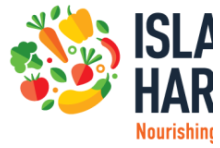In 1992, Island Harvest was born out of a very simple observation -- Long Islander Linda Breitstone was at a convenience store and was frustrated by employees discarding good food at the end of a sales day. With a safe house for women and children and other nonprofit organizations located close within the community, she knew there was a need; she just needed to find out how to create the bridge between those who had excess food and those who needed it. The experience inspired Linda to ... Lire la suite
In 1992, Island Harvest was born out of a very simple observation -- Long Islander Linda Breitstone was at a convenience store and was frustrated by employees discarding good food at the end of a sales day. With a safe house for women and children and other nonprofit organizations located close within the community, she knew there was a need; she just needed to find out how to create the bridge between those who had excess food and those who needed it. The experience inspired Linda to launch Island Harvest and begin collecting good surplus food using her station wagon, a cooler and a coalition of friends.
Over the years, Island Harvest Food Bank has gone through three distinct periods of growth in its history. The FIRST, at its founding, taking an idea and need and forming a nonprofit organization with the resources to support it. The SECOND, ten years later when the organization went through a purposeful change to move toward an organization providing a myriad of long-term programs and services to support and enhance its “food rescue” work, and an expanded model of food banking. Since our inception, nearly three decades ago, we have distributed approximately 182 million pounds of food, supplementing more than 151 million meals. As Long Island’s largest hunger relief organization, Island Harvest Food Bank is among the region’s leading organizations in emergency response readiness for food and product distribution and support, and this has led our organization into its THIRD and very important transformation, as evidenced by the organization’s rapid and continued response to community and local disasters, the Government Shutdown, Superstorm Sandy, Hurricanes Irma, Harvey and Maria, and most recently, the COVID-19 pandemic.
Cacher le texte au complet